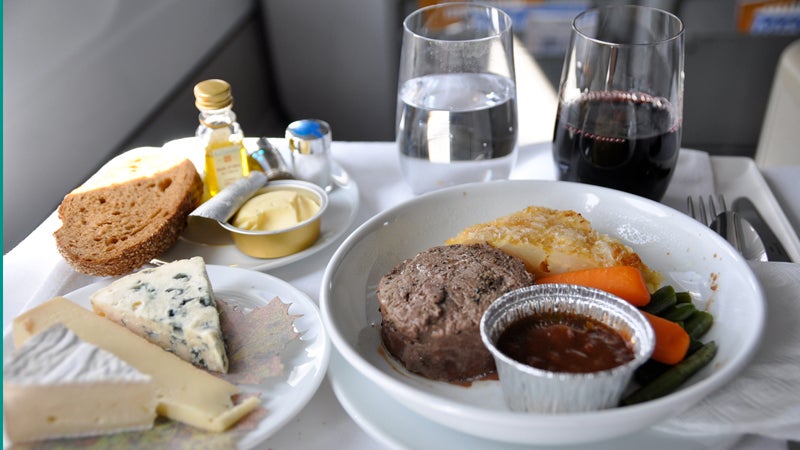Unless they’re desperate dieters, people don’t whoop at a half-ounce weight loss. For airlines, however, whose passengers aren’t slimming down anytime soon and whose fuel costs are rising in kind, even the tiniest losses add up to wind beneath their wings.
Airlines have been known to and seat belts or to make the same amount of fuel go farther without ejecting passengers or a black box midflight. Richard Branson’s Virgin Atlantic, however, is taking plane weight loss to a whole new, minutely fastidious level: The airline . Individual trays aren’t much lighter than before, but collectively they trim 300 pounds and from each Virgin flight.
The new and improved trays boast not only slimmer bodies but also spongy, multitiered plastic inserts that keep food in place with less waste than the old paper liners.
Virgin’s tray saga began in 2011, when the company wanted to find a posher way to serve food. Approaching , Virgin requested small trays suitable for multicourse meals, with dessert and coffee following main courses. Beyond looking nicer, smaller trays would give people more room and allow food carts to hold 33 percent more meals.
But things often come down to cost, and Virgin soon realized the company could gain from a holistic redesign of its food delivery system (as the supply chain experts call it). Seeing that the new trays helped Virgin eliminate one heavy food trolley per flight, they set about working with MAP to update other infrastructure. Three years of work and tests in mock cabin environments produced the trays, as well as mod coffee pots that feature more manageable handles and allow flight attendants to easily discern their contents—tea, water, coffee, —with the twist of a wheel.
As with all supply chains, changes to one small gear require upheaval of the entire machinery or careful work around them. With the tray, Virgin and MAP chose the latter option, but tweaking multiple, almost pedantic elements of the system to cut weight and improve efficiency has been considered.
“We had quite a few discussions about opportunities to save weight and cost through serving milk a different way,” MAP design director Jon Marshall told Fast Company. “But not every idea we had was implementable. On the milk front, some of the packaging couldn’t be recycled at the destination, so they’d actually fly it back to London. That negates the savings that can be made.”
Although Virgin and other airlines are doing what they can to limit fuel use for the bottom line, . One round-trip cross-country flight emits two to three tons of carbon dioxide per person; a year’s worth of commuting by car (at an average of 100 miles per week) yields 1.9 tons per car. Per year. That’s why Virgin is so excited about the “green” potential of its waste-eliminating trays. According to the airline, it will see a 45 percent reduction in greenhouse gases and fuel costs across the trays’ lifetime compared with emissions traceable to the old trays. Every bit counts.


